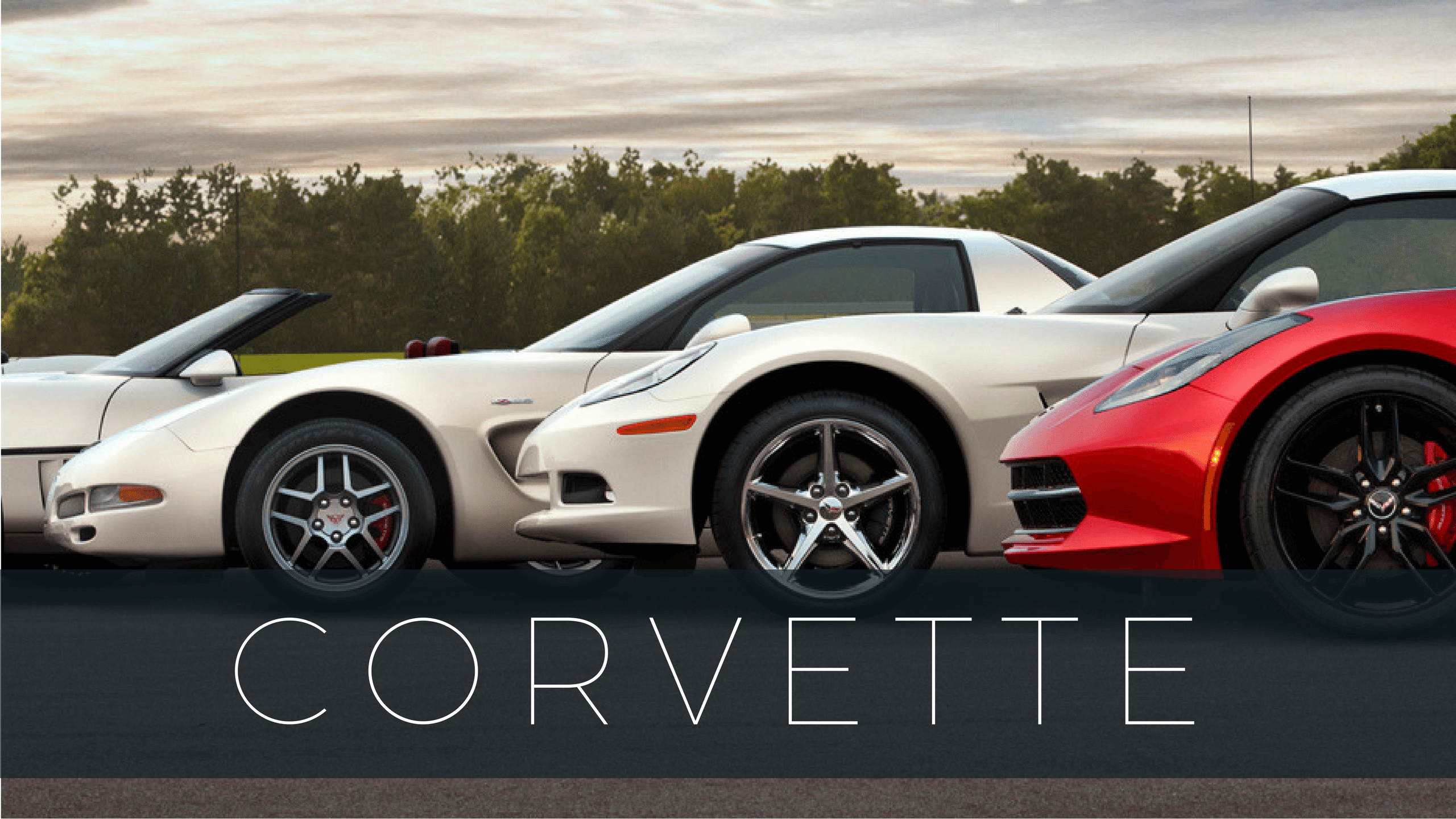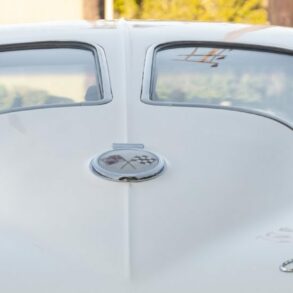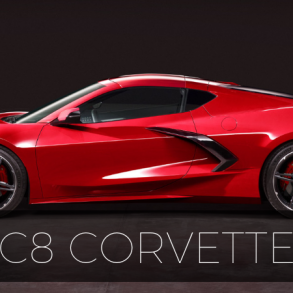Corvette Overview

In the economic boom that occurred at the end of World War II, General Motors introduced the only production sports car being offered by American automotive manufacturers at that time. American soldiers, many of whom were returning home from active service in Europe, were introduced to the C1 Chevrolet Corvette, a two seat “image” car that found immediate initial appeal as a centerpiece of the 1953 GM Motorama.
The appeal was short-lived. Within a few months of its initial introduction, Chevrolet rolled the first production 1953 Corvettes off their assembly lines. It didn’t take long for the public to realize that this first Corvette was more sparkle than substance. The car quickly earned the nickname “the plastic bathtub”, a title that was a distinct correlation between the stark white shell of its body and it’s sluggish, unimpressive performance.
| Manufacturer: | Chevrolet |
| Parent Company: | General Motors |
| Production: | 1953-Present |
| Body Styles: | 2 Door Coupe, 2 Door Convertible |
| Corvette Generations: | C1 (1953-1962), C2 (1963-1967), C3 (1968-1982), C4 (1984-1996), C5 (1997-2004), C6 (2005-2013), C7 (2014-2019), C8 (2020-) |
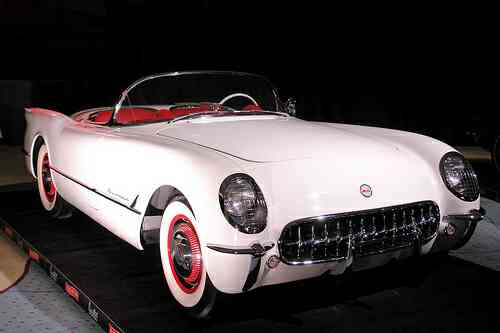
Fortunately for GM, their engineers and marketing teams listened and responded to the criticism of those first Corvette owners. In the years that followed, Corvette came into its own and GM began producing cars that offered greater performance that matched the attitude and styling of its 1953 Corvette counterpart.
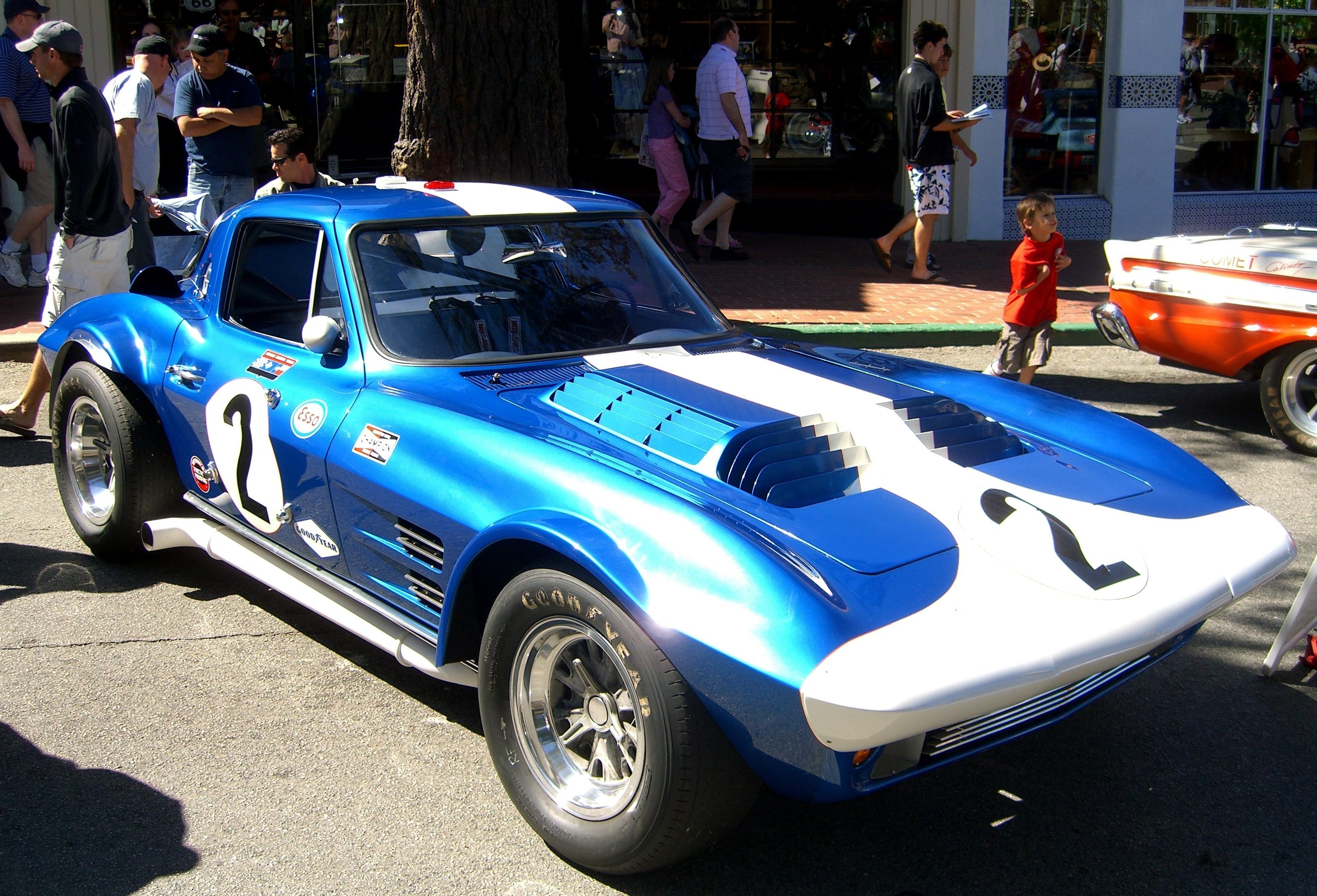
By the 1960’s, Corvette had developed a solid reputation both on the open road and the racetrack. With ever increasing horsepower being packed into each of these cars, General Motors had developed a car that could truly hold it’s own on race day against cars like the Shelby Cobra.
The 1963 Grand Sport Corvette, though short lived, solidified the future for Corvette – not only as a production car, but as a true American sports car. The Grand Sport, along with all of the second generation Corvette production models, captivated the hearts and imaginations of car enthusiasts worldwide and secured a future for Corvette that continues to flourish more than fifty years later.
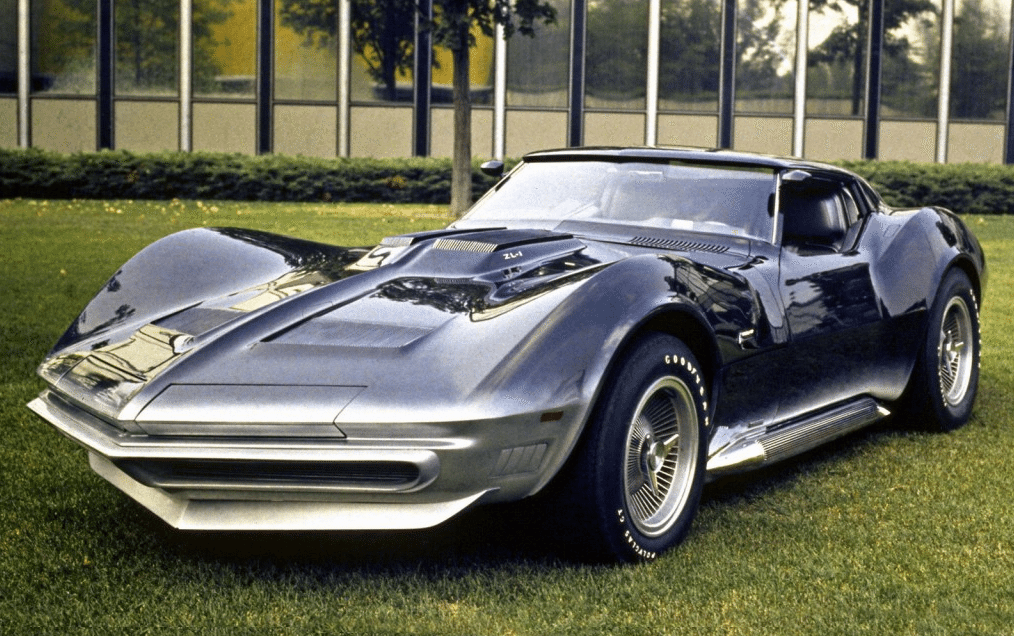
By the early 1970’s, Corvette (along with many production model sport and muscle cars) was met with a lot of adversity. Internal issues within GM mixed with the politically charged Vietnam War, mass civil unrest, the emergence of federally mandated safety guidelines, pollution regulations, and a need for increased fuel efficiency brought into question the future of this iconic sports car.
However, with the emergence of the Mako Shark II prototype (in the late sixties) laying the foundation for the future look and feel of the third generation Corvette, GM pushed on despite these odds and the Corvette triumphed, remaining in its same basic form for fifteen years.
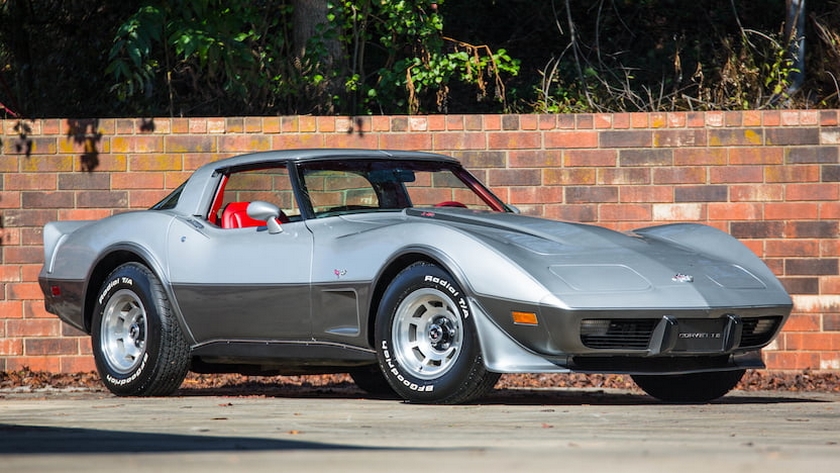
Because of the immense popularity of the third-generation Corvette, speculation began to grow as to how GM was going to top the durable and appealing “shark”. It wasn’t long before enthusiasts and critics alike were discussing the possibility of a mid-engine Corvette that could rival it’s European counterparts. Even so, the third-generation “Shark” kept evolving. Chevrolet continued to refine the car throughout the late 1970’s and into the 1980’s, including a hatchback model in 1982 which foreshadowed the next-generation Corvette – a car that was already deep into development by that time.
DID YOU KNOW: While there are many Corvette enthusiasts that deny the existence of the 1983 Corvette, there is ONE example of this car. The “One and Only” 1983 Corvette resides at the National Corvette Museum in Bowling Green, Kentucky and is available for public viewing in the large domed rotunda along with many other, unique Corvettes.
GM began production of the fourth generation Corvette in 1984. This new C4 Corvette was the first fully redesigned Corvette in 15 years. Although it lacked some of the outrageous performance of it’s predecessor, it emerged instead as a more sophisticated and practical sports car. Still, despite the notable decrease in horsepower (in early fourth generation models) due to ever increasing emission regulations, GM focused its attention instead to develop a car that focused primarily on handling. Like the generations of Corvettes before it, the new 4th generation Corvette got better over time. In 1986, Corvette enthusiasts celebrated the return of a convertible model which hadn’t been available to consumers since 1975.
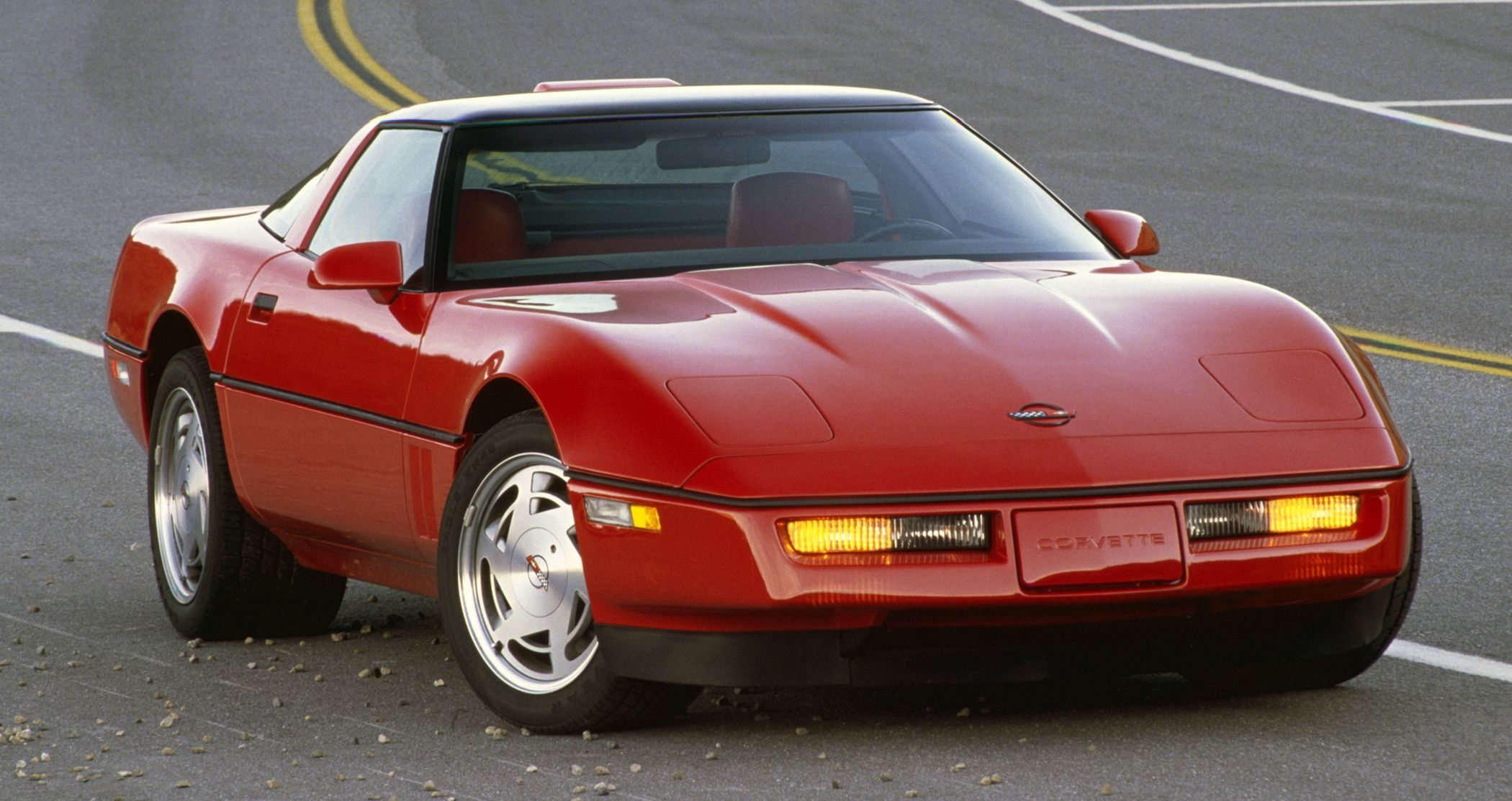
One of the crowning achievements of the 4th generation Corvette was the arrival of the ZR-1 in 1990. The ZR-1 was strictly a high performance Corvette. It quickly became known as “the King of the Hill” – a title which was well earned. A true supercar in every sense of the word, the ZR-1 could run with some of the most exotic sports cars in the world including Ferrari and Porsche. However, the ZR-1 remained a surprisingly inexpensive alternative, offering comparable handling and performance for less than half the exuberant sticker prices tied to its European counterparts.
Despite the arrival of the ZR-1 and the ever increasing handling and performance of this newest Corvette, challenging financial markets and internal corporate issues left GM questioning the feasibility of Corvette’s future as production pressed on into the 1990s. Despite these concerns, the C4 Corvette continued to improve in performance and quality, improving demand for the car and opening the door for an even more advanced, more sophisticated Corvette.
The arrival of the fifth generation C5 Corvette in 1997 marked a turning point in the evolution of “Americas Favorite Sports Car.” It was the first truly all-new Corvette since 1953. Moreover, it was designed from the outset to be a sturdy convertible. The C5 Corvette was engineered to achieve higher levels of performance, sophistication and quality than any of it’s predecessors.
The styling of this new Corvette was also a departure from earlier models. While the conceptualization of the C4 had largely been a simplification of the seventies era “Shark,” the C5 featured a more rounded and graceful appearance that helped to recapture some of the aggressive looks of the C3. Automotive critics hailed the C5 Corvette as “the best Corvette in history.”
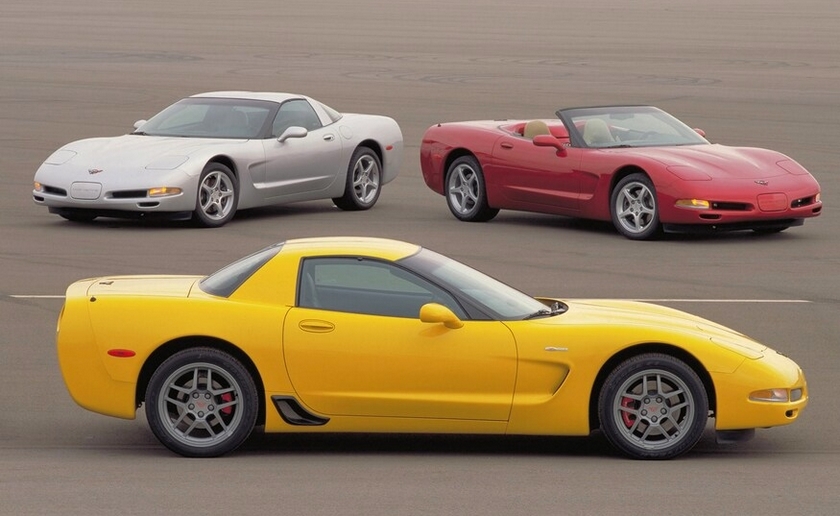
Much like the ZR-1 before it, GM recognized the opportunity to produce a higher end Corvette and introduced the Z06 in 2001. This “high end” Corvette included an updated suspension, larger wheels and tires, revised gearing ratios and function brake cooling ducts as well as an impressive step up in horsepower with the additional of a more powerful engine that carried the Z06 to an impressive 385 horsepower. While this Corvette was superior to the ZR-1 in almost every category except speed, it was also substantially less expensive, which helped further catapult it’s popularity with automotive enthusiasts everywhere.
The sixth generation C6 Corvette was introduced in 2005. The C6 was considered more of an evolution of the C5 than an all new Corvette, although the C6 continued to take giant steps forward in the areas of performance and styling. One of the most notable changes that GM made to the sixth-generation Corvette was the return of the exposed headlamps (which had been absent from the Corvette since 1962). Along those same lines, the C6 re-introduced a somewhat “retro design” that was a throwback to the Sting Rays of the 1960s.
While the Z06 was notably absent at the initial roll out of the C6, it wasn’t long in coming. In late 2005, the 2006 Z06 Corvette was announced. This Corvette was engineered for the race track, producing performance and handling unlike any Corvette in the history of America’s favorite sports car – that is until rumors began to circulate that GM was developing an even higher-performance Corvette. Initially known only by it’s codename “Blue Devil,” General Motors began to release details of the Blue Devil project in April, 2007 and later that year revealed the “Blue Devil” was, in fact, the return of the ZR-1 Corvette. This “super-Vette” emerged from the shadows to become the fastest (and most expensive) production Corvette to-date in the history of the brand.
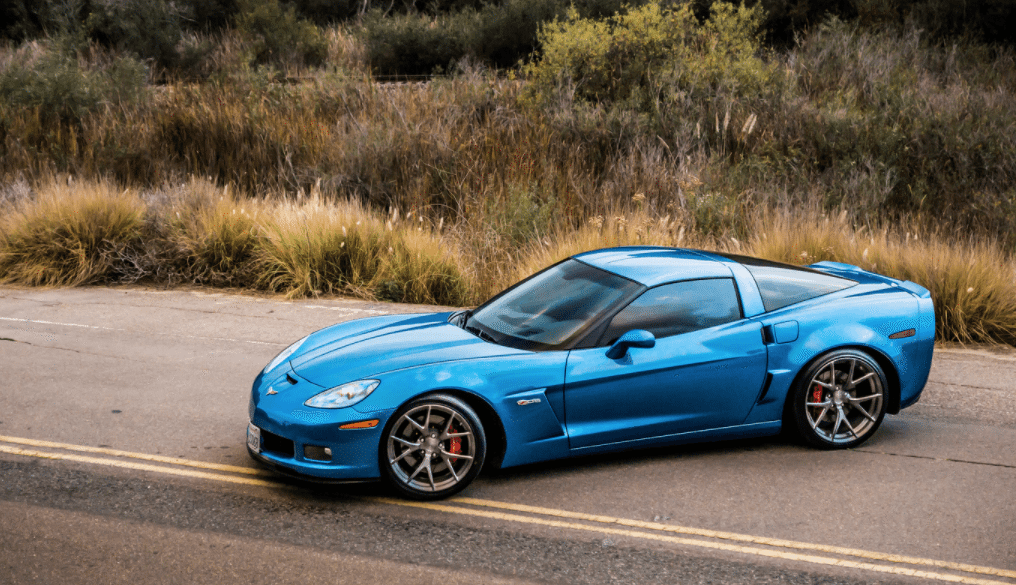
In 2010, General Motors unveiled the Grand Sport Edition Corvette and the Z06 Carbon Special Edition Corvette. Like the ZR-1, each of these special edition Corvettes provides consumers with upgraded and more robust performance options, greater horsepower, better handling, and a broad assortment of regular production options – from satellite radio to built in GPS and more.
On January 13, 2013, Chevrolet unveiled the all-new 2014 C7 Chevy Corvette Stingray at the Detroit Auto Show. The arrival of the C7 Corvette was the culmination of months of speculation by enthusiasts, car experts, critics, and countless fans, and was treated with more fanfare and pomp-and-circumstance than a Hollywood blockbuster movie debut.
The 2014 C7 Corvette Stingray was a true departure from its predecessor. It only shared two parts with the previous-generation Corvette – the removable roof release lever and a filter in the air filtration system. The rest of the car was completely new – including the frame structure, chassis, powertrain, and an all-new interior and exterior design. The development of this new Corvette was centered around the mantra that “form follows function.” The result was a Corvette that not only rivaled its European counterparts, but was capable of dominating them both on the racetrack and the open road.
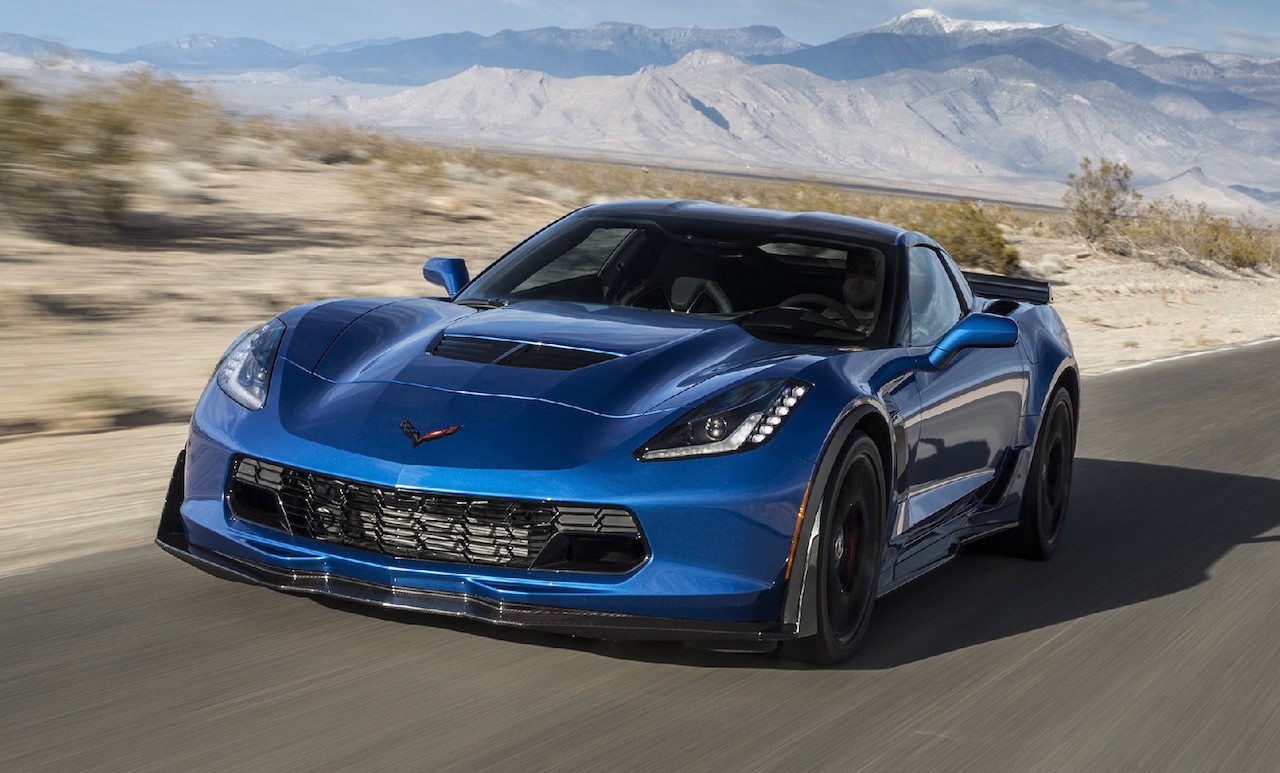
In 2015, Chevrolet unveiled an all-new Z06 model to its lineup that was more powerful than any production Corvette that had come before it – including the sixth-generation ZR1. Boasting 650 horsepower and 650 lb./ft. of torque, this Z06 was intended for the track. It was also the first Z06 to be offered with a supercharged engine, a removable roof panel (thanks to a stronger aluminum frame) and, perhaps most noteworthy, it was the first Z06 to feature an eight-speed automatic transmission.
By 2016, rumors had already begun to circulate that Chevrolet engineers were once more at work on an all-new Corvette. As a mid-engine Corvette had been a source of speculation since the announcement of the C3 Corvette in the late 1960’s, it wasn’t long before the automotive press began circulating rumors that a mid-engine Corvette was imminent – with many “factual” claims stating the car could potentially be available as soon as 2018!
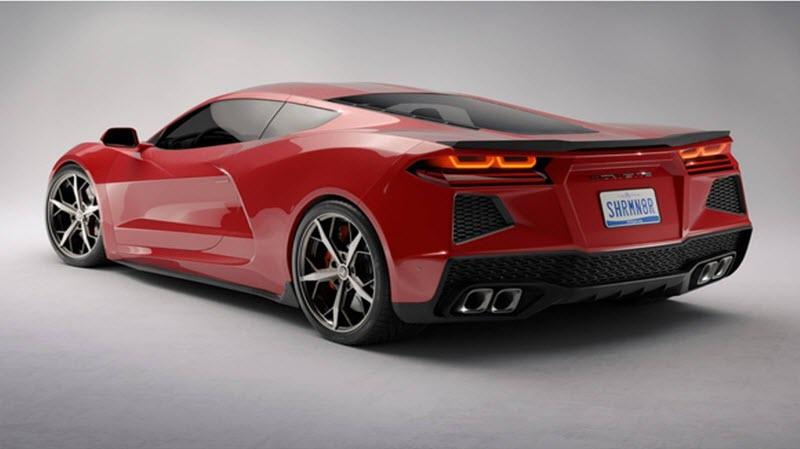
Meanwhile, production option for the C7 Corvette continued to evolve as did the available packages offered to consumers. In 2017, Chevrolet unveiled its newest iteration – the Corvette Grand Sport – at the Geneva Auto Show. The all-new 2017 Corvette Grand Sport was the culmination of the car’s motorsports-bred pedigree. Like the 2015 Corvette C7.R Pro race car, the new Grand Sport combined a lightweight architecture, a track-honed aerodynamics package, Michelin tires and a naturally aspirated engine.
On November 12, 2017, Chevrolet officially unveiled the all-new Corvette ZR1 as a 2019 model. The car boasted a powerful LT5 6.2L V-8 supercharged engine which dramatically advanced the supercharging technologies first introduced in the 2009 sixth-generation Corvette ZR1 and continued with the 2015 seventh-generation Z06 Corvette. The engine, which was officially rated at 755 horsepower (563 kW) and 715 lb-ft of torque (969Nm), established an entirely new benchmark in Chevrolet performance. The 2019 Corvette ZR1 was unveiled in Dubai and was finished in the Sebring Orange Design Package.
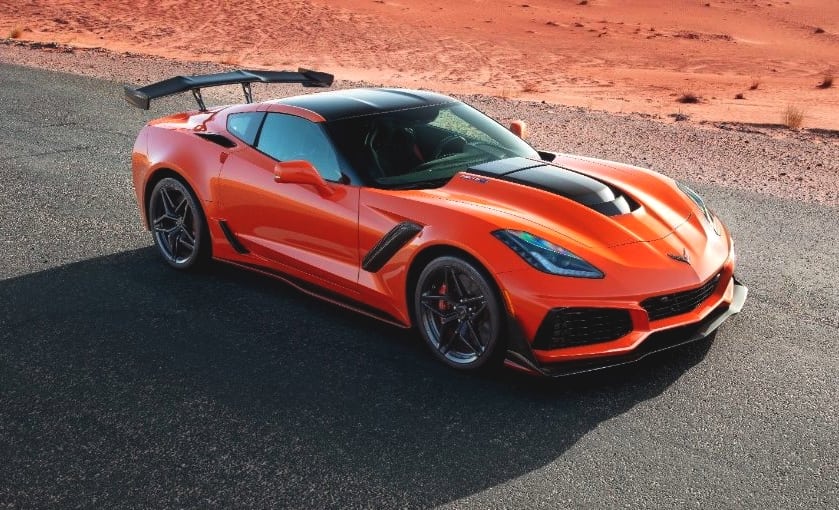
The car officially went on sale in spring of 2018 with an initial base price of $120,900.oo, making it the first production Corvette to cost over one-hundred thousand dollars.
As for the C8 Corvette that was rumored for 2018? As the 2018 model year approached, rumors continued to circulate about an alleged mid-engine Corvette that was under development by Chevrolet. Ambitious automotive journalists, camped out at automotive tracks and testing centers around the world, began publishing “spy photos” of a heavily camouflaged coupe that became the subject of scrutiny by the Corvette community.
The 2018 model year came and went without word from GM about any mid-engine projects. That didn’t stop the rumor mills from churning out endless bits of information – from CAD drawings and alleged “insider” bloggers to dozens (eventually hundreds) of credible spy photos and videos – that added credence to the belief that a mid-engine Corvette was on the horizon.
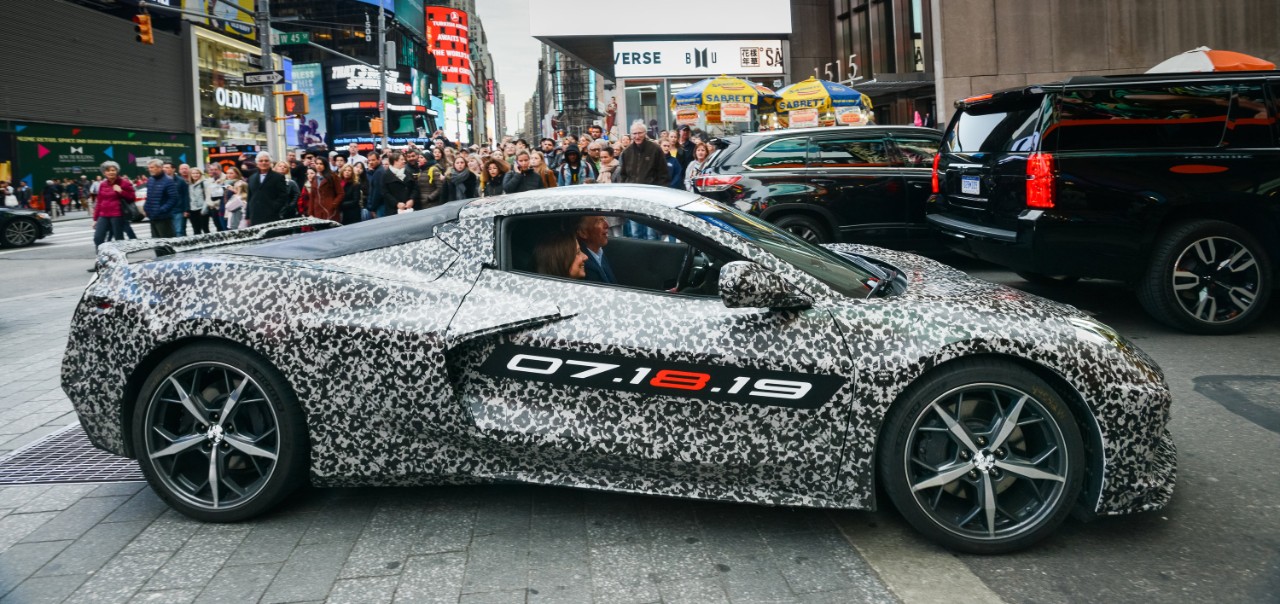
Finally, on July 18, 2019, Chevrolet officially unveiled the 2020 Mid-Engine Corvette to the world. The car, which had been a vision of Corvette pioneers since the 1960’s, had finally become a reality. Since its introduction in July, the car has been showcased across the United States. It’s “national tour” has included Chevrolet dealerships across the U.S., as well as national Corvette events including the “Corvette Homecoming” at the National Corvette Museum and at the Petit Le Mans at Road Atlanta.
It has been claimed that the 2020 Mid-Engine Corvette is sold-out and that the demand for the car is such that would-be owners are anxiously awaiting the opportunity to order one when the 2021 model becomes available. Additionally, there are other iterations of the car in the works – including a Z06 model for the 2022 model year. It will be interesting to watch the evolution of the mid-engine Corvette in the coming years, especially given the ever-increasing focus on fossil-fuel emissions, the increasing cost of petroleum and a global focus on hybrid and electric vehicles. Some speculate that the mid-engine generation may include an electric Corvette, while others have maintained that GM will re-introduce a six-cylinder option (the last Corvette to include a six-cylinder engine was the 1955 Corvette).
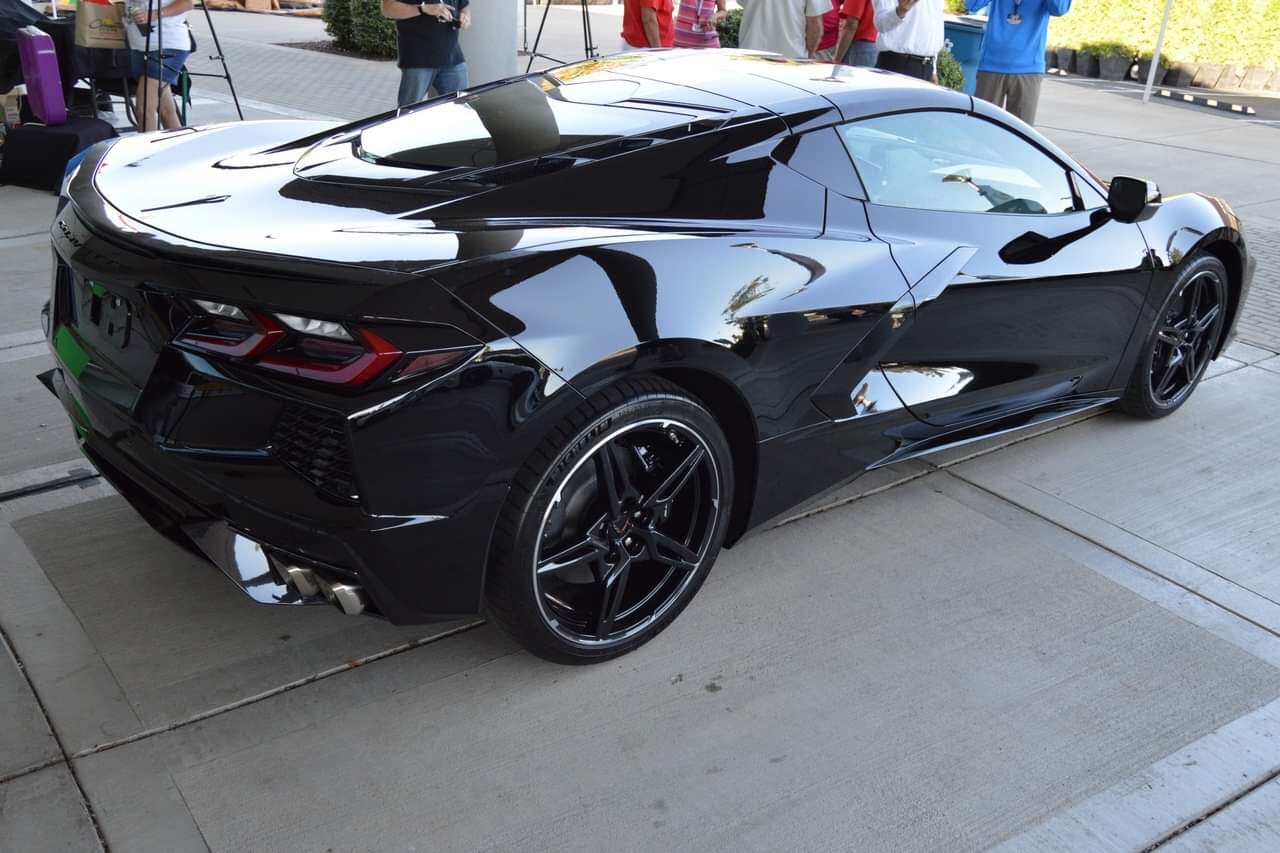
This much is certain – its an exciting time to be a Corvette fan. With the arrival of the 2020 Corvette coupe and convertible, the audience for Corvette has shifted from the traditional enthusiasts – mostly 50+ year olds who have been fans of the brand for decades – to an audience that includes millennials who previously saw the Corvette as an “old persons car.” Will the mid-engine Corvette attract a more global audience? Will consumers be attracted to the car’s European styling?
Time alone will tell….but the future looks bright for Corvette.
Corvette Generations: C1 (1953-’62), C2 (1963-’67), C3 (1968-’82), C4 (1984-’96), C5 (1997-’04), C6 (2005-’13), C7 (2014-’19), C8 (2020- )


